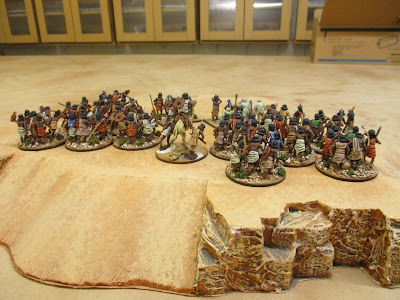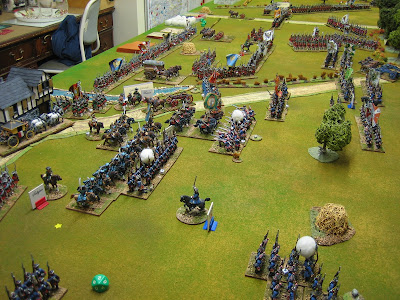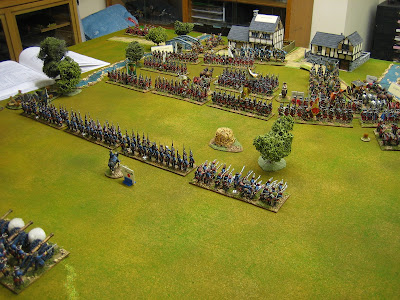This week I have finished the Beja contingent for the Mahdists - I've halved the Mahdist lead pile! It's not the end of painting Mahdists for a while longer as I still have 24 Baggara horsemen (technically part of the Kordofani contingent) to do the Second Battle of El Teb. That amount of cavalry seems a little excessive to me but it seems to be the usual amount for others doing that battle (down to the scenario in Black Powder?), so I'll follow the trend.
Anyway, the last batches of Beja:
Two sword and spear units (#8 and #9), a second captured Krupp, a captured Gatling gun and a command stand. All figures are Perry Miniatures except for the Gatling gun itself, which is an Empress Miniatures piece. The bases are by WarBases. All were painted by yours truly, mostly using enamels; metals colours are mostly acrylic. Bases were washed with diluted acrylic ink and drybrushed with various shades of Dulux household emulsion paint; scrub is Woodland Scenics clumps.Because all the Beja bases will be mixed up (especially over time) I chose to add a few splashes of colour to the figures in these batches. A few blue, green and yellow waistcoats - I did a few red ones in the early batches. These can be more clearly from the rear: About one in 15 figures isn't dressed in white, off white, beige or dirty orange.
Note: I still need to texture and paint the base of the command stand - which I decided to add last minute.
I'm rather taken with this Gatling gun from the Empress Miniatures' Sudan range, which I picked up whilst sorting out Peter J's stuff. The gunner is a PM camel rider (left over from doing my Crusades period Saracen baggage train). Indeed, the two units of sword and spear were also largely inherited by me from Peter.I had no idea what Gatling guns (beyond shape) looked like as I don't think I've ever come across a coloured picture of one before and I do like the amount of brass - it looks great with the gun metal and carriage grey. Note the guy pointing out targets in a fetching yellow waistcoat.
The Beja contingent. At six figures to 100 men (see unit sizes below) the 398 figures represent a force of about 7000 Beja warriors.
The Beja contingent comprises:
A unit of 11 camel mounted scouts (pretending to be 12 strong); three units of 21 riflemen (each pretending to be 24 strong); two Krupps and a Gatling gun; five command stands.When properly sorted out it runs out to nine units of 33 sword and spear warriors (each pretending to be 36 strong).
I still need to flag up five units but that must wait for my printer to become operational again - the price of ink!
That's not a bad amount of painting in six or so weeks. I'm in the groove.
Seeing the lead pile diminish by a quarter in so short a time has me worried so, as well as adding a unit of Baggara horse at the Battleground show, I've added some more Korofani troops to bring them back up to the planned eight units of sword and spear, and I've added a few more command figures. Except for another unit of Beja camels which I don't think I need, that just about does it for the Mahdists. Now I'm planning the Egyptian contingent which I'll probably buy over the next few months - my basic OOB is still First Battle of El Teb with a few extra Egyptian/Sudanese units to make up a diminished force for any fictional offensive land operations led by Gordon: I'm certainly not collecting forces for the siege of Khartoum at this figure to man scale because, major period or not, forces of 9,000 Egyptians and 20,000 Mahdists is well beyond scope. I'm still umming and ahing about adding the British Guards Brigade and the Camel Corps.
I've also decided, for definite, that this will be my last major period. After this I'm doing small wars - like the French and Indian War, a few naval bits and pieces, cowboys, etc. Frankly, I'm running out of storage as much as anything.

























































